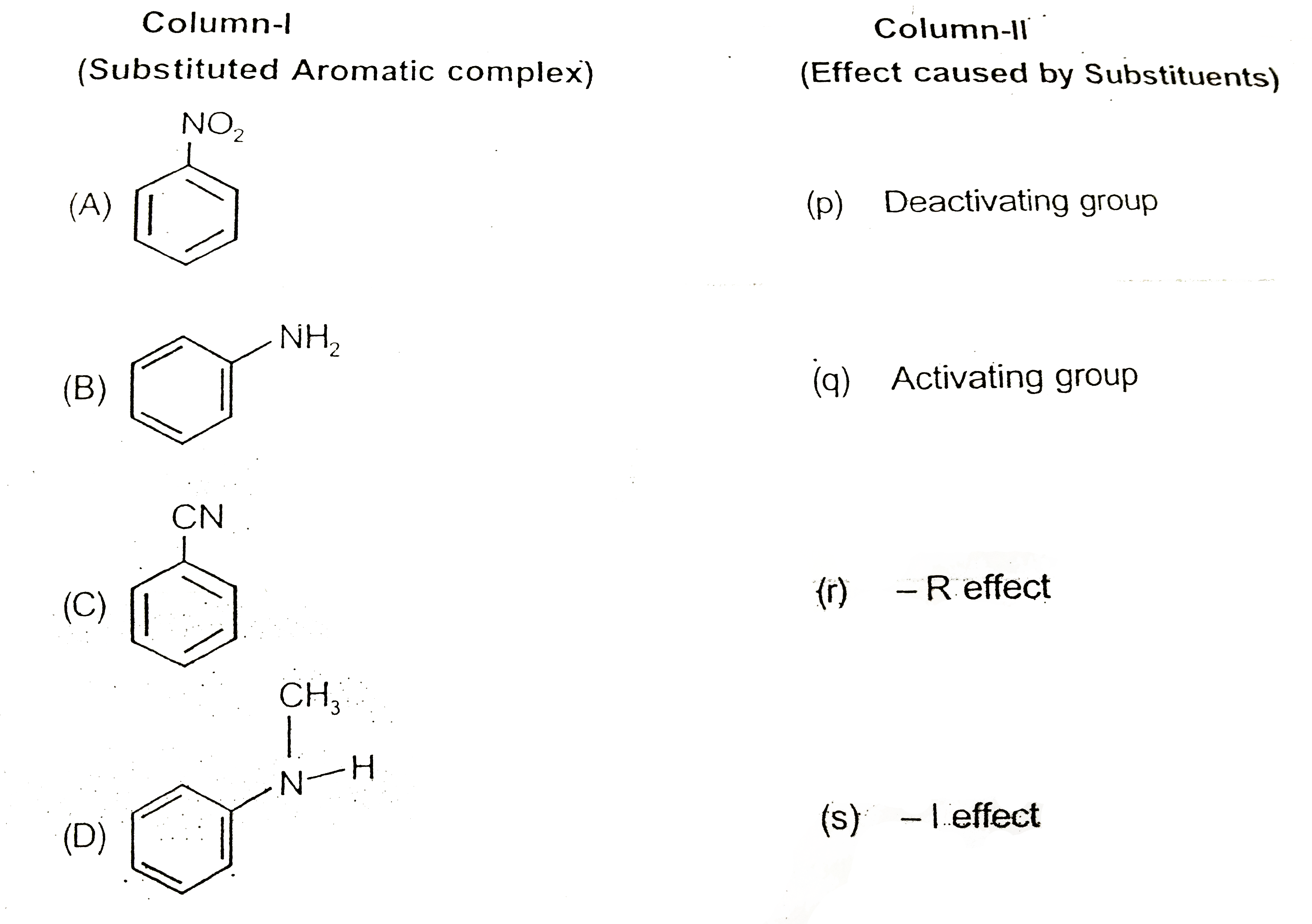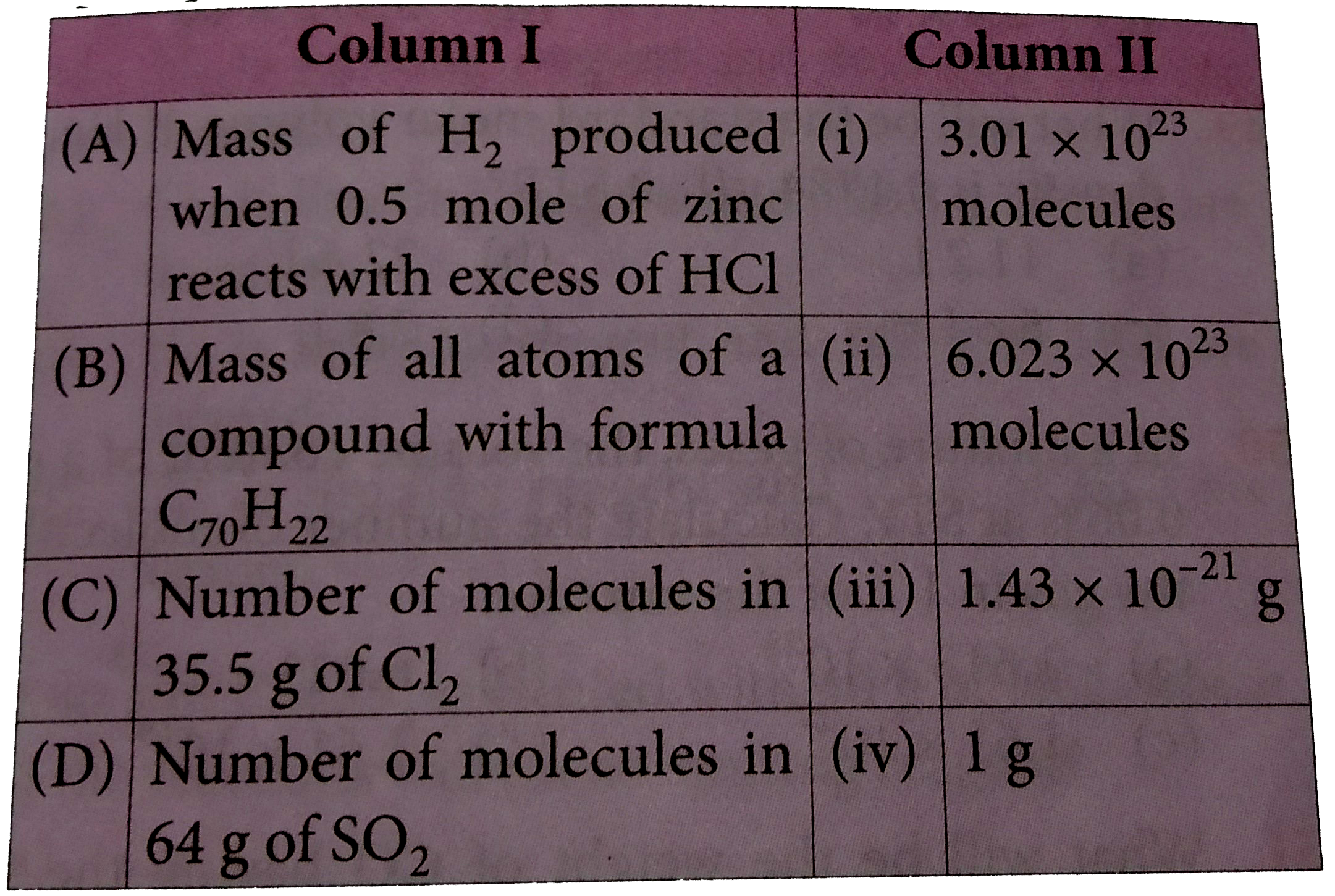Match items of coloumn I and coloumn II
Coloumn I Coloumn II(Vascular bundle)(Organ)A.Collateral and open(i)Cucurbita stemB.Radial(ii)Fern stemC.Bicollateral(iii)Maize rootD.Concentric(iv)Sunflower Stem(v)Maize stem
A−(v),B−(iv),C−(iii),D−(i)
A−(iv),B−(iii),C−(i),D−(ii)
A−(v),B−(i),C−(iii),D−(ii)
A−(iv),B−(iii),C−(ii),D−(i)
The correct Answer is:2
To match the items from Column I with Column II, we will analyze each type of vascular bundle and identify the corresponding organ.
1. Identify Collateral and Open Vascular Bundles:
- Collateral and open vascular bundles consist of xylem and phloem arranged side by side with cambium in between.
- This type is typically found in dicot stems.
- Match: A. Collateral and open → (iv) Sunflower Stem.
2. Identify Radial Vascular Bundles:
- Radial vascular bundles have xylem and phloem arranged in alternating positions, commonly found in the roots of both dicots and monocots.
- In this case, we will match it with the maize root.
- Match: B. Radial → (iii) Maize Root.
3. Identify Bicollateral Vascular Bundles:
- Bicollateral vascular bundles have phloem on both sides of the xylem. This type is characteristic of the Cucurbita family.
- Match: C. Bicollateral → (i) Cucurbita Stem.
4. Identify Concentric Vascular Bundles:
- Concentric vascular bundles have either phloem surrounding xylem or vice versa. This type is typically found in ferns.
- Match: D. Concentric → (ii) Fern Stem.
Final Matches:
- A → (iv) Sunflower Stem
- B → (iii) Maize Root
- C → (i) Cucurbita Stem
- D → (ii) Fern Stem
Summary of Matches:
- A (Collateral and open) → (iv) Sunflower Stem
- B (Radial) → (iii) Maize Root
- C (Bicollateral) → (i) Cucurbita Stem
- D (Concentric) → (ii) Fern Stem
- Collateral and open vascular bundles consist of xylem and phloem arranged side by side with cambium in between.
- This type is typically found in dicot stems.
- Match: A. Collateral and open → (iv) Sunflower Stem.
- Radial vascular bundles have xylem and phloem arranged in alternating positions, commonly found in the roots of both dicots and monocots.
- In this case, we will match it with the maize root.
- Match: B. Radial → (iii) Maize Root.
- Bicollateral vascular bundles have phloem on both sides of the xylem. This type is characteristic of the Cucurbita family.
- Match: C. Bicollateral → (i) Cucurbita Stem.
- Concentric vascular bundles have either phloem surrounding xylem or vice versa. This type is typically found in ferns.
- Match: D. Concentric → (ii) Fern Stem.
- A → (iv) Sunflower Stem
- B → (iii) Maize Root
- C → (i) Cucurbita Stem
- D → (ii) Fern Stem
- A (Collateral and open) → (iv) Sunflower Stem
- B (Radial) → (iii) Maize Root
- C (Bicollateral) → (i) Cucurbita Stem
- D (Concentric) → (ii) Fern Stem
Topper's Solved these Questions
- ANATOMY OF FLOWERING PLANTS BOOK - VMC MODULES ENGLISHCHAPTER - ANATOMY OF FLOWERING PLANTS EXERCISE - IMPECCABLE
59 Videos
- ANATOMY OF FLOWERING PLANTS BOOK - VMC MODULES ENGLISHCHAPTER - ANATOMY OF FLOWERING PLANTS EXERCISE - ENABLE
50 Videos
- BIODIVERSITY AND CONSERVATIONBOOK - VMC MODULES ENGLISHCHAPTER - BIODIVERSITY AND CONSERVATIONEXERCISE - IN-CHAPTER EXERCISE-B
10 Videos
Similar Questions
Match the coloumn-I with column-II

View SolutionMatch the following and select the correct combination.
Column IColumn IIA.Red algae(i)MarchantiaB.Liver wort(ii)PinusC.Walking fern(iii)PolysiphoniaD.Gymnosperm(iv)Adiantum
View SolutionMatch the excretory organs listed under column I with the animals given under column II and select the correct option.
ColumnIColumnII(Excretory organs)(Animals)A.Nephridia(i)HydraB.Malpighian tubules(ii)LeechC.Protonephridia(iii)SharkD.Kidneys(iv)Roundworms(v)Cockroach
View SolutionMatch the column and select the correct option.
Column - IColumn - II(1)Leaf tendril(i)Cactus(2)Leaf Spine(ii)Pea(3)Stem tendril(iii)Bougainvillea(4)Stem thorn(iv)Gourds(v)Turmeric
View SolutionMatch the column I with Column II:-
Column IColumn II(A) Unicellular(i) Spirogyra(B) Colonial(ii) Kelps(C) Filamentous(iii) Volvox(D) massive plant bodies(iv) Chlamydomonas
View SolutionMatch the coloumn I with coloum II and mark the appropriate choice.

View SolutionMatch the column I and II
Column IColumn II(a) Apocarpous(i) Papaver(b) Syncarpous(ii) Michellia(c) Epiphyllous(iii) Cashew(d) Cotyledon(iv) Aloe
View SolutionMatch the column-I and column-II
Column-IColumn-II(i)Agaricus(a)Ascomycetes(ii)Colletotrichum(b)Deuteromycetes(iii)Albugo(c)Phycomycetes(iv)Neurospora(d)Basidiomycetes
View SolutionMatch column I with column II and select the correct option from codes given below
Column IColumn IIA.Chemical methods(i)Tubectomy and vasectomyB.IUDs(ii)Copper T and loopC.Barriers(iii)Condom band cervical capD.Sterilisation(iv)Spermicidal jelly and foam(v)Coitus interruptus and calender method
(a) A-(iv),B-(ii),C-(iii),D-(i)
(b) A-(iv),B-(v),C-(ii),D-(iii)
(c) A-(i),B-(iii),C-(ii),D-(v)
(d) A-(iv),B-(ii),C-(v),D-(i)
View SolutionMatch column I with column II and select the correct option from the given codes.
Column IColumn IIA.Rhinoceros(i)High endemismB.In situ conservation(ii)Off site conservationC.Ex situ conservation(iii)On site conservationD.Hotspots(iv)Kaziranga
(a) A-(iv), B-(iii), C-(ii), D-(i)
(b) A-(iv), B-(i), C-(ii), D-(iii)
(c) A-(iv), B-(ii), C-(iii), D-(i)
(d) A-(iv), B-(i), C-(iii), D-(ii)
View Solution
